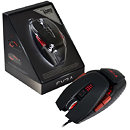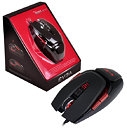
Mushkin Launches Carbon KB-001 Mechanical Keyboard
Looking to extend its reach from its other product lines, Mushkin has now extended its product tendrils towards the mechanical keyboard spectrum, with the launch of the Carbon KB-001. Mushkin is apparently positioning the Carbon KB-001 as a high-end offering, boasting the usage of CNC'd and aircraft-grade anodized brushed aluminum, with the PCB being touted as a double fiberglass design. The aircraft-grade components are otherwise reflected on the coloring and overall accents of the keyboard, with the lateral red exhaust grills being (we suspect) reminiscent of those found in fighter jets.
The Carbon KB-001 offers RGB lighting and standard Kailh Brown switches, with other switch options' availability remaining unclear. Mushkin also mentioned a full-size 104-key keyboard with n-key rollover, a Windows key lock, anti-ghosting technologies, and a braided fiber cable, with pricing being reported at around the $70 mark.
The Carbon KB-001 offers RGB lighting and standard Kailh Brown switches, with other switch options' availability remaining unclear. Mushkin also mentioned a full-size 104-key keyboard with n-key rollover, a Windows key lock, anti-ghosting technologies, and a braided fiber cable, with pricing being reported at around the $70 mark.










